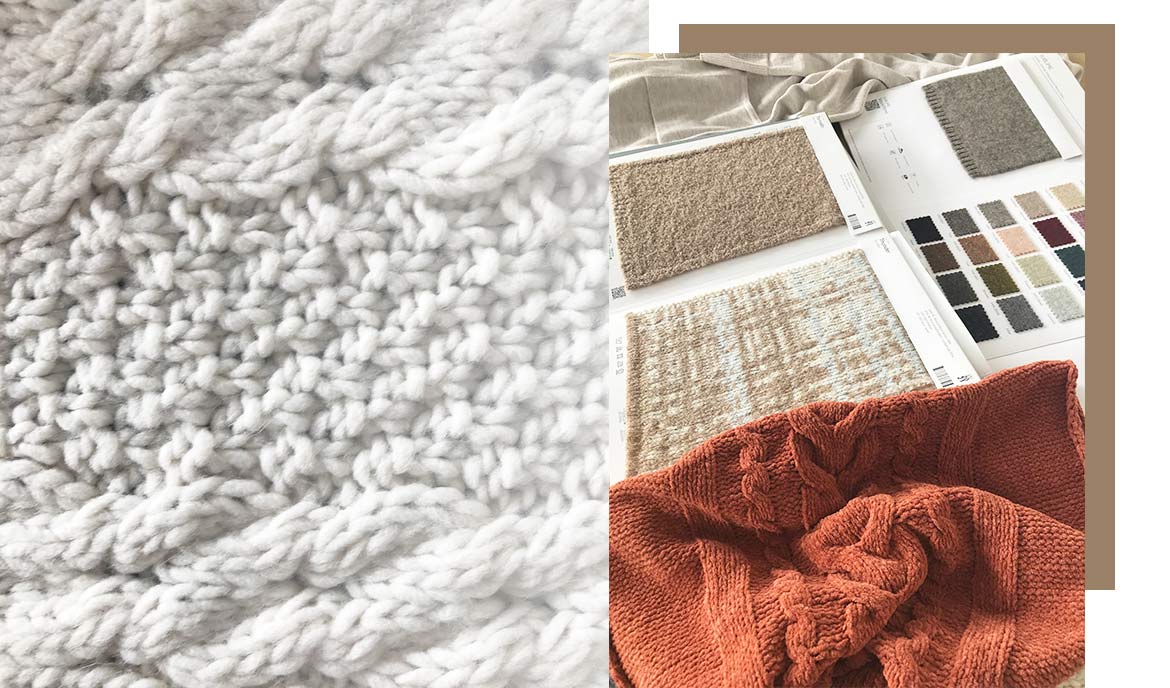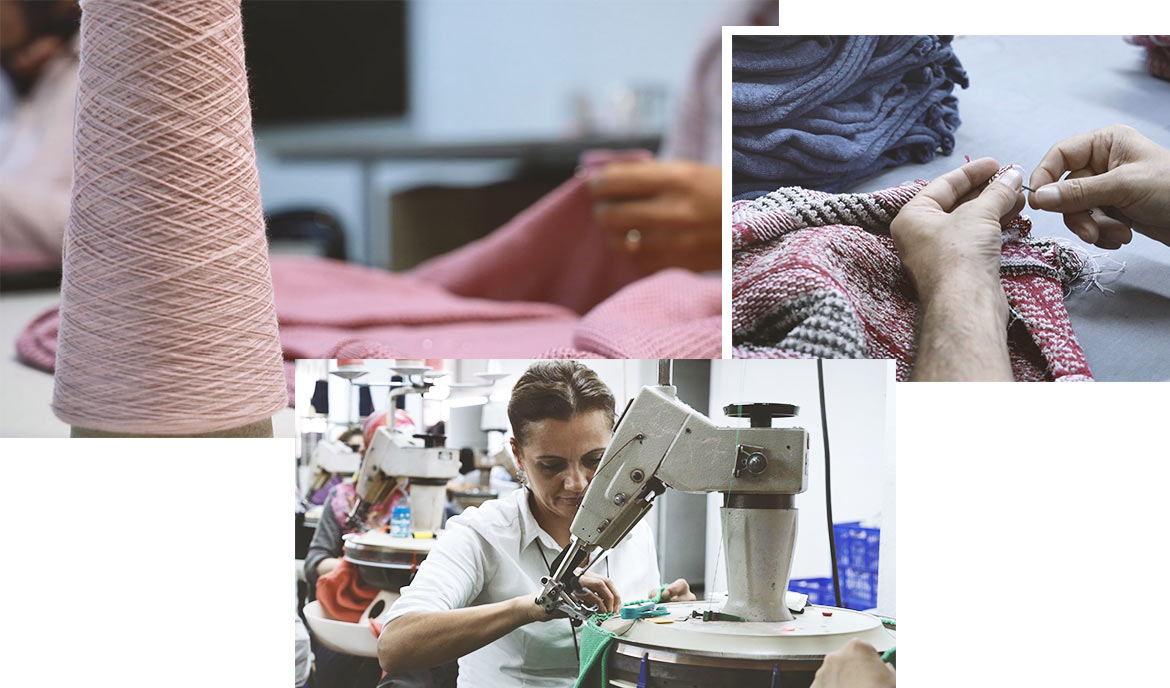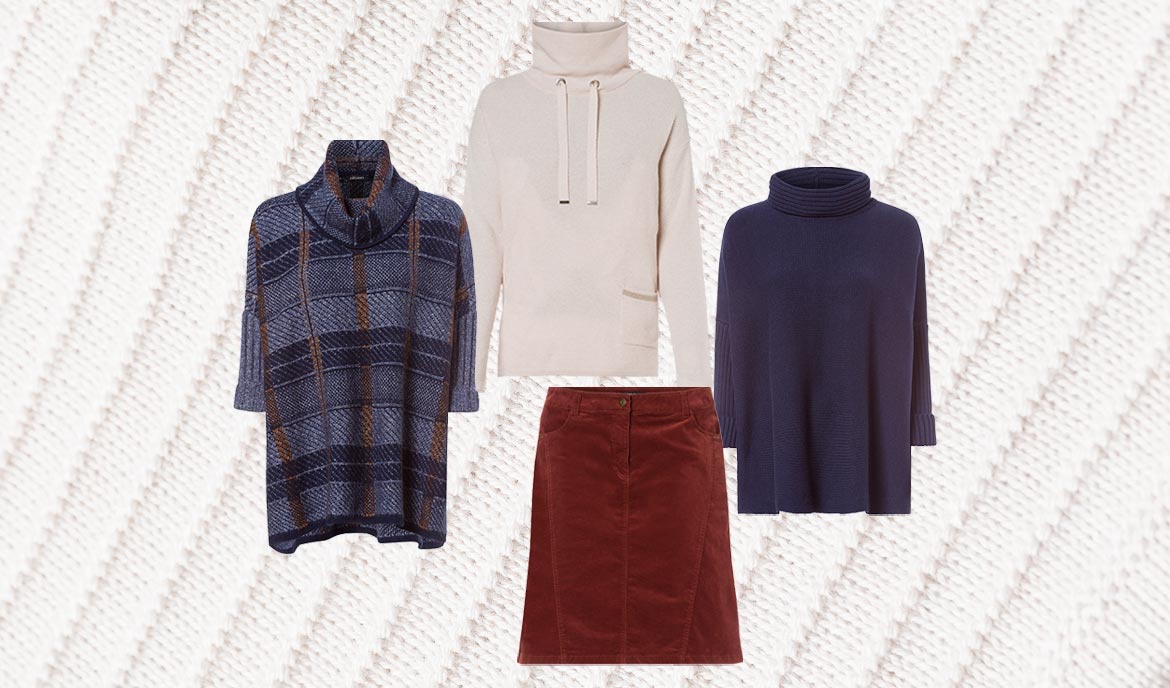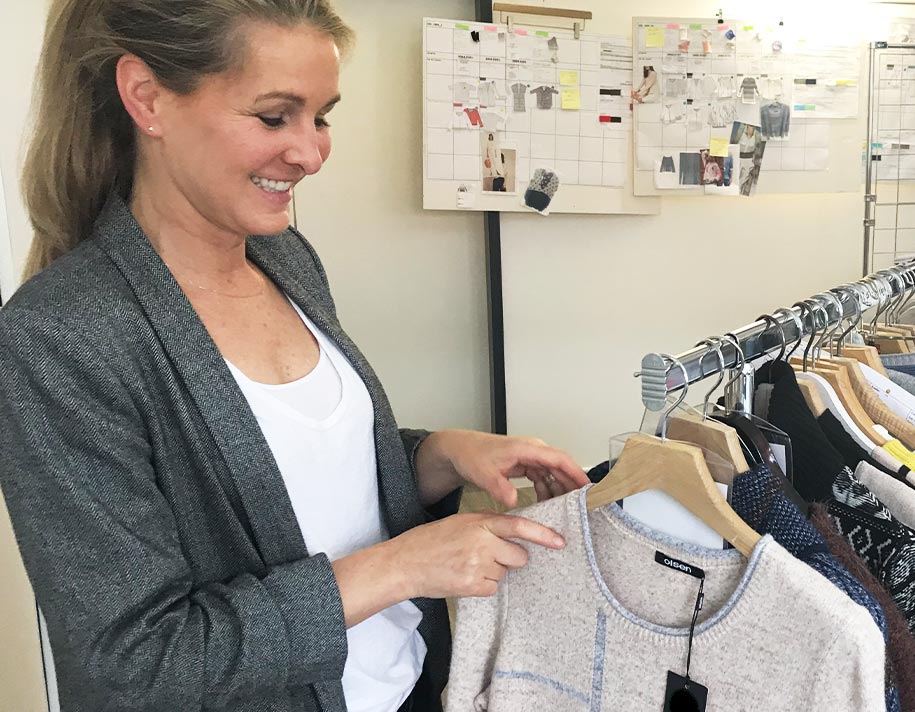Designer Julia has been designing knitwear for Olsen for 20 years.
At Olsen we love and live fashion, and focus on creating feminine clothing in a range of styles. We love all these styles, but above all else, our heart beats for knitwear. One of our designers Julia has has a hand in designing Olsen’s knitwear styles for 20 years now. Below, enjoy our interview with Julia about all things knit!

Knitwear is one of the most versatile fashion products.
Julia, this year you are celebrating your 20th anniversary as a knits designer at Olsen. Was it always your dream to create knitted styles?
You could certainly say that. I have always been enthusiastic about fashion and did an internship in fashion design during my studies. It was then that I got an opportunity to design knitwear for the first time… I found it so great that I specialized in it during my studies. When I came to Olsen, I was asked which product group I would like to be responsible for, you can imagine what I said!
What exactly is it about designing knitwear that you enjoy so much?
In fashion, knitwear is simply one of the most versatile fabrications ever. I love that you can always create new structures and effects with different yarn blends and knitting techniques. Plus, the fact that knitting machines are constantly evolving technically means that I, as a designer, always have new possibilities for creating knitwear. This diversity is what makes knitting so much fun for me.

When it comes to knitting, the producers go about their business with a great deal of attention to detail.
In which countries is knitwear produced for Olsen?
We produce mainly in China and Turkey. Sometimes, we also import yarns from Italy, which we supply to our Turkish producers. But the yarn suppliers in Turkey and China have also developed extremely well over time and produce very lovely, high-quality yarns.
Do you work closely with the producers of the yarns and sweaters?
Yes – there is no other way! We constantly exchange ideas for new knitwear designs and then work together on a style until it meets my expectations exactly. Our producers regularly send me stitch samples to get feedback from me. Sometimes I notice that the knit has become much harder or heavier than I would have wished – if this happens, I discuss the details of what needs to be further optimized with our producers.
When shopping, how can you tell whether a knitted item is high quality?
I would always look at the label and check if the part has a natural fibre content. For example, cotton, linen or animal wool should be blended in.

Julia likes to combine knitwear with feminine skirts.
And what advice can you give for those who want to take great care of their knits?
It’s a misconception that you can’t wash knits in the washing machine. Of course hand washing works too, but many make the mistake of wringing their knits out after, which causes the fibres to become extremely strained. Instead, I recommend that you use the wool cycle on your washing machine. It is really gentle at a nice cool temperature (maximum 30 °C!) Afterwards, you should gently lay the pieces flat to dry. This is very important, as they are quickly stretched and misshaped when hung to dry.
Before you go – share a style tip with us! How do you like to pair knitwear at the moment?
I love to play with contrasts and combine knitted sweaters in casual, oversized shapes with figure-hugging skirts. This is the easy way to give cuddly knitwear a feminine touch. I complete the look with beautiful booties or over-the-knee boots and I’m ready for any Autumn outing!
